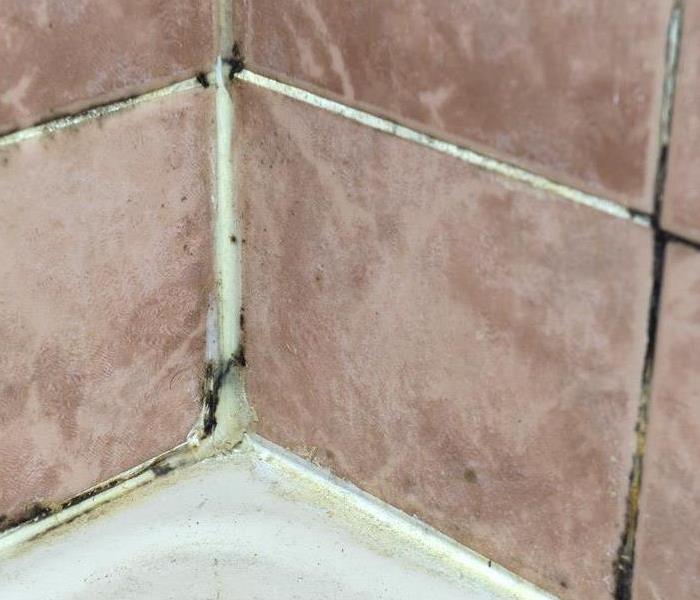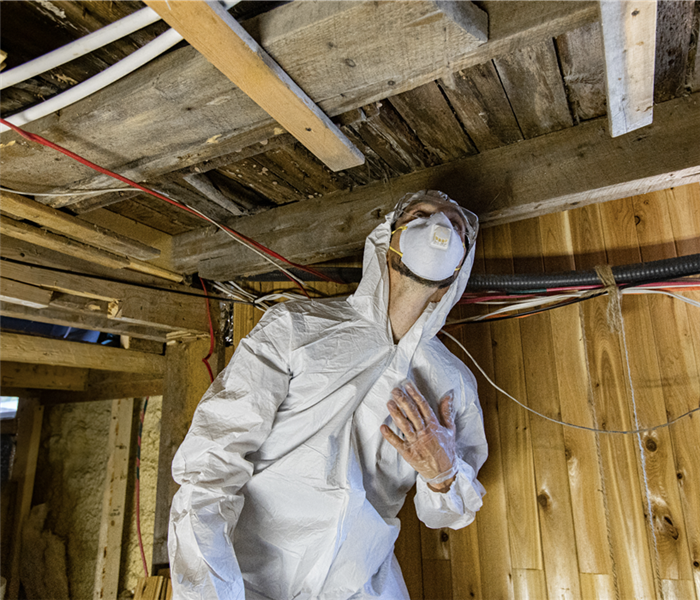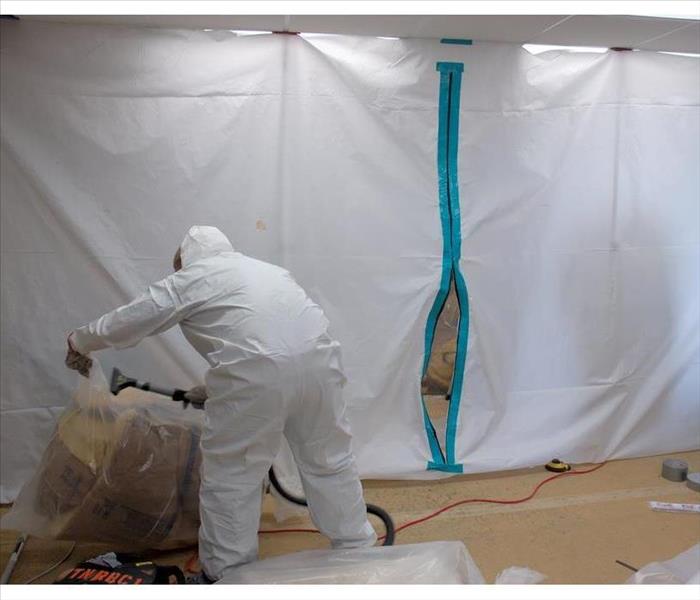Recent Mold Remediation Posts
Cleaning Tips: How to Get Rid of Mold in Your Shower
10/26/2023 (Permalink)
 Cleaning your shower periodically to reduce mold and mildew damage.
Cleaning your shower periodically to reduce mold and mildew damage.
Dealing with mold in your shower can be a frustrating and unsightly problem. However, with the right approach and cleaning techniques, you can effectively eliminate mold and prevent its recurrence. In this blog, we will share some helpful tips on how to get rid of mold in your shower without addressing any health concerns or risks associated with mold exposure.
Gather the Necessary Supplies
Before starting the cleaning process, gather the essential supplies. You will need gloves, a mask, a scrub brush or sponge, a cleaning agent (such as vinegar, hydrogen peroxide, or a mold-specific cleaner), and hot water. Ensure the area is well-ventilated by opening a window or turning on a bathroom fan.
Remove Surface Mold
Start by removing any loose mold on the surface of your shower tiles or grout. Thoroughly scrub the affected areas with a brush or sponge. If using a cleaning agent, follow the instructions on the product label and apply it to the mold-infested surfaces. Rinse the area with hot water and allow it to dry completely.
Deep Clean the Grout
To tackle mold in grout lines, create a paste using baking soda and water. Apply the paste to the grout and scrub it using a toothbrush or small brush. This will help eliminate mold embedded in the porous grout. Rinse the grout lines thoroughly with hot water and wipe away any excess paste or residue.
Prevent Future Growth
To prevent mold from returning, it's essential to keep your shower clean and dry. After each use, wipe down the walls and tiles with a squeegee or towel to remove excess moisture. Periodically inspect the shower for any signs of mold and address the issue promptly to prevent it from spreading.
Regular Maintenance
Maintaining a clean shower is key to preventing mold growth in the long run. Regularly clean your shower using mildew-resistant cleaners to minimize mold and mildew buildup. Additionally, consider applying grout sealant periodically to create a protective barrier against moisture and mold.
Eliminating mold in your shower is manageable with the proper cleaning techniques. By following these tips, you can effectively tackle mold growth and maintain a clean and mold-free shower. Remember to prioritize regular maintenance and keep the shower area dry to prevent mold from reappearing in the future. In some cases, despite your best efforts, mold in the shower may persist or reoccur. If you find that the mold problem is extensive or difficult to remove on your own, it may be necessary to seek professional assistance. Professional mold remediation services have the expertise and specialized equipment to handle severe mold infestations safely and effectively. Remember to address mold issues promptly to ensure a clean and healthy shower environment for you and your family.
Mold Damage Tips: What to Do in an Emergency
5/15/2023 (Permalink)
 Mold damage is a serious problem that requires quick action to minimize the damage and prevent it from spreading.
Mold damage is a serious problem that requires quick action to minimize the damage and prevent it from spreading.
Mold damage is a serious problem that can cause extensive damage to your home and belongings. In addition to the physical damage, mold can also cause a musty odor that is difficult to remove. If you discover mold damage in your home, it's essential to take quick action to minimize the damage and prevent it from spreading. In this blog, we will discuss some tips on what to do in an emergency mold damage situation.
Stay Safe
When dealing with mold damage, it's important to stay safe and take necessary precautions. Wear appropriate personal protective equipment (PPE) such as gloves, goggles, and a respirator to prevent inhalation or contact with mold spores. Turn off the HVAC system to prevent the spread of mold spores and seal off the affected area to prevent the spores from spreading to other parts of the house. Be cautious when handling moldy materials, and avoid disturbing the mold to prevent further damage or spreading.
Identify the Source
Mold thrives in moist environments, so the first step in preventing mold damage is to identify the source of the moisture. Check for leaks or water damage in the affected area, and fix any problems as soon as possible. If you're unable to identify the source of the moisture, a professional restoration company, like SERVPRO of South Baton Rouge, can assist you in identifying and fixing the issue.
Dry the Affected Area
Once you've identified the source of the moisture, it's essential to dry the affected area as soon as possible. Mold can start to grow in as little as 24-48 hours, so it's important to act quickly. Use fans or a dehumidifier to dry the area, and if necessary, remove any standing water or wet materials. A professional restoration company has specialized equipment to dry and dehumidify the affected area thoroughly.
Clean the Affected Area
After the affected area is dry, it's essential to clean it thoroughly. Use a mixture of water and detergent to clean the affected area, and scrub any visible mold growth. It's important to remember that bleach is not an effective mold cleaner, and it can actually make the problem worse. A professional restoration company has specialized equipment and cleaning agents to remove mold thoroughly.
Dispose of Damaged Materials
If any materials are severely damaged by mold, such as drywall or carpeting, it's important to dispose of them properly. Do not attempt to remove or clean severely damaged materials, as this can spread mold spores and exacerbate the problem. A professional restoration company can safely remove and dispose of any damaged materials.
In conclusion, mold damage is a serious problem that requires quick action to minimize the damage and prevent it from spreading. If you discover mold damage in your home, it's important to stay safe, identify the source of the moisture, dry the affected area, clean it thoroughly, and dispose of any severely damaged materials. A professional restoration company like SERVPRO of South Baton Rouge has the expertise and specialized equipment to handle mold damage emergencies safely and effectively.
What Is The Difference Between Mold Remediation and Mold Removal?
1/10/2023 (Permalink)
 When it comes to mold remediation, containment is the first step.
When it comes to mold remediation, containment is the first step.
Mold remediation and mold removal are two terms that homeowners and renters may hear when there is a problem with mold in their home or apartment. While both terms refer to cleaning up an existing mold problem, these solutions differ significantly in how they are applied. It’s important to understand this difference in order to know what kind of work is required for removing the mold.
Water Damage and Mold Damage go Hand-In-Hand
Mold damage is a result of water damage. In other words, if there were no water involved in the first place, there would be nothing to worry about when it comes to mold growth.
It’s important that you know whether or not your home has been damaged by water (and by extension, mold) before you begin any remediation process on your own.
What is Mold Remediation?
Mold remediation is the process of removing mold from a building or structure. Mold remediation is not the same as mold removal, which involves ridding an area of all traces of the fungus.
Mold remediation entails ridding a space of mold-damaged materials and areas that have been affected by mold growth, while also addressing water leaks or moisture problems that may have contributed to the problem in the first place.
What is Mold Removal?
Mold Removal refers to the process of removing mold from a surface, usually a non-porous and semi-porous material. It also includes the removal of mold from an object. Mold removal does not include the removal of materials such as carpets, insulation, or drywall.
What is the Difference Between Mold Remediation and Mold Removal?
Mold remediation and mold removal are both processes designed to get rid of mold and the materials that have been contaminated with it.
Mold removal is a cleaning process, while mold remediation involves both a cleaning process and the disposal of contaminated items.
Containment is Essential to Mold Remediation
When it comes to mold remediation, containment is the first step. Without proper containment of a mold-infested area, subsequent steps in the mold remediation process will be ineffective. In fact, failing to isolate and contain the affected area can actually make matters worse by increasing the hazard to your home or business.
Why does containment matter in mold remediation? The answer lies in how mold spreads: through microscopic spores that are released into the air when you disturb contaminated materials. Containment helps prevent these spores from spreading further into other areas of your home or office building by preventing them from getting out into other parts of your living space or workspace.
Clean and Protect Areas Not Affected by Mold
Once you've cleaned up the mold and removed it from your home, you'll need to protect areas not affected by mold. It's also important to clean and disinfect these areas. This can be done using a disinfectant spray, wipes, or solutions.
You may want to consider using an aerosol spray bottle for clean-up if it's available at your local hardware store or online retailer. Aerosol cleaners provide ease of use because they're readily available and require no mixing of ingredients before application on surfaces in order to get the job done quickly!
Mold removal is the process of cleaning up the mold from your home or business. Mold remediation, on the other hand, is a more involved process that involves removing all traces of mold growth from an area and ensuring it does not come back. By knowing what type of work needs to be done in order for your property to be safe again, you will know whether or not hiring a professional company like ours makes sense for you!



 24/7 Emergency Service
24/7 Emergency Service


